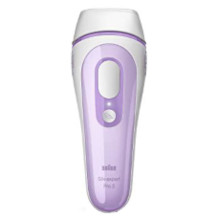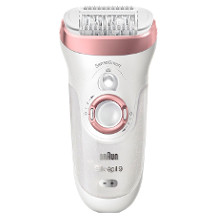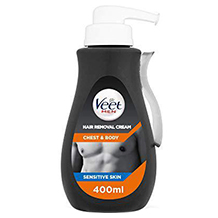Nose hair trimmer purchasing advice: how to choose the right product
- The most important facts in brief
- A nose hair trimmer is used for the painless removal of annoying hairs in the nose.
- When buying a nose hair trimmer, consumers should make sure that it is not made of materials to which they are allergic.
- Many nose hair trimmers are also suitable for gently removing hair in the ears and for trimming the eyebrows.
What is a nose hair trimmer?
A nose hair trimmer is a handy shaver with a small shaving head – so small that the shaver can be easily inserted into the nostrils to remove nose hair quickly and painlessly. The nose hair trimmer is thus a convenient alternative to tweezers. Good nose hair trimmers are available for as little as ten euros. However, if you opt for this form of nasal hair removal, you should always be careful not to remove all of the nasal hairs: nasal hairs fulfil a defensive function by protecting the respiratory tract from foreign bodies and pathogens.
Overview of different types of nose hair trimmers
The function of a nose hair trimmer is quickly explained: a tiny comb brings the hairs into position and ensures sufficient distance to the skin, while rotating blades cut off the hairs just above the root. When buying, consumers have a choice between manual/mechanical and electronic devices.
Manually operated nose hair trimmers
Manually operated nose hair trimmers usually have a spring-loaded handle. When the user presses on this handle, the blade is set into oscillation or rotation. To ensure that the skin is not injured in the process, the blade is located in a cage-like guard with regular openings.
Pro points
- Independent of electricity
- No charging times
- Long lifetime
- No running costs
- Low probability of failure
Drawbacks
- User needs both hands
- Less comfortable
- Less effective
Electrically powered nose hair trimmer
In an electric nose hair trimmer, the blade is set in motion by a small motor, which in turn is powered by batteries or rechargeable batteries. Here, too, there are devices whose blade is enclosed in a small cage to prevent injuries. Electric nose hair trimmers, on the other hand, with an unprotected shearing comb that jerks back and forth, can cause injuries if handled carelessly.
Pro points
- Convenient
- Effective and fast
- Can be operated with one hand
Drawbacks
- Dependent on electricity
- Causes running costs
How to find the best nose hair trimmer
The first choice prospective buyers must make concerns the shaving head system. Also relevant for the decision are factors such as the operating mode and battery life, the basic quality of the hair removal and the hygienic requirements, the ease of use and the face, the accessories included and the workmanship. The design should rather play a subordinate role in the purchase decision.
The shaving head
Nose hair trimmers are available with two different shaving head systems. Classic devices have a round shaving head in which the blades rotate and shorten excessively long hairs in the nose or ears. However, there are also models with a shaving head in the form of a narrow, slightly curved rod. This rod contains the blades, which move in opposite directions. This straight shaving head fits perfectly into the nostril and is also ideal for shaping the eyebrows.
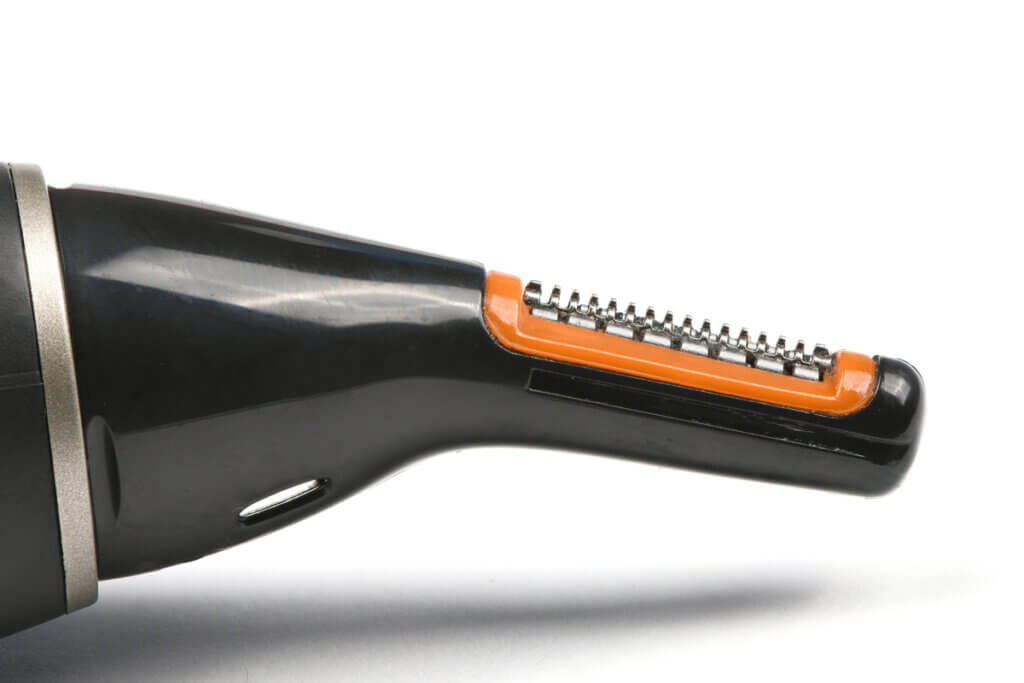
Are nose hair trimmers safe?
Since the inner wall of the nostrils is not touched by the blade of a nose hair trimmer, the devices are absolutely safe to use. Only no-name products from the lowest price segment should be used with caution. However, nose hair trimmers from well-known manufacturers are always characterised by a high degree of safety, so that the consumer need not worry.
The mode of operation
As already mentioned, specialist retailers offer both manually and electrically operated nose hair trimmers. If you opt for the electric version, you also have the choice between battery- and rechargeable battery-powered devices. Rechargeable batteries are more environmentally friendly and cheaper in the long run. However, if the battery is empty, the user must first stop trimming his nose hair and recharge the battery, whereas with a battery-powered device he can simply insert new batteries.
The battery life
Battery life is an important point that should not be neglected at all when buying a nose hair trimmer. Some devices run for about 60 minutes on a full battery charge. Since trimming only takes a few seconds, this is more than sufficient. However, users should also bear in mind that the battery can discharge if the nose hair trimmer is not used for a longer period of time. When buying a battery-powered nose hair trimmer, it is worthwhile to look for a high-quality lithium-ion battery that at least does not have a memory effect.
The quality of hair removal
A good nose hair trimmer removes nose hair without painful pulling. The nostrils are also freed from excessively long hairs as gently as possible without damaging the skin. In this context, the material of the nose hair trimmer also plays a major role: the part of the trimmer that is inserted into the nose should definitely be free of materials that could cause allergic reactions in sensitive people (for example, nickel).
Hygiene
The topic of hygiene takes a high priority when buying a nose hair trimmer. The device should be as easy to clean as possible and ideally can be rinsed under running water. Some models also have a removable shaving head, which makes cleaning even easier. A positive side effect: if the shaving head is worn out, it can be easily replaced – so the user does not have to buy a new device immediately. However, this procedure is only economical for higher-priced nose hair trimmers. Inexpensive devices should be replaced with a new model when the shaving head is worn out.
The ease of use
A high-quality nose hair trimmer is characterised by a high level of operating comfort. It lies well in the hand, is easy to insert into the nostrils and does not feel uncomfortable on the skin. Hair removal is absolutely painless and yet thorough. If you want to use your nose hair trimmer in the shower, you should also make sure that the device is waterproof. Many high-quality devices also have an integrated LED light, which makes the application much easier because it can be shone directly into the nostrils.
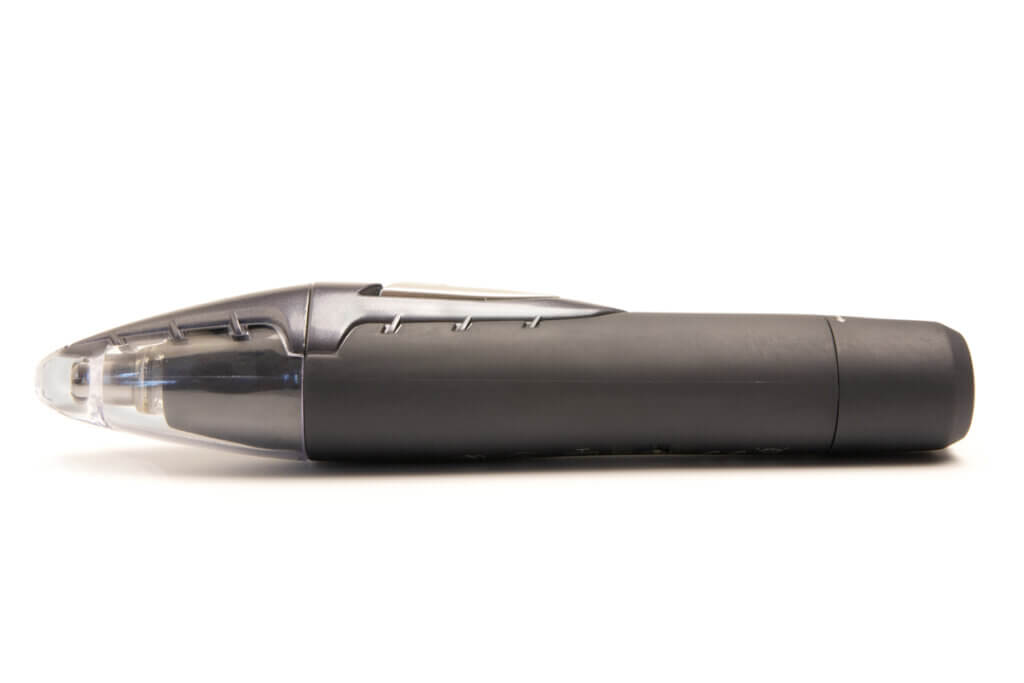
Accessories and scope of delivery
Depending on whether the nose hair trimmer is to be used exclusively for shortening the nose hair or also for other body areas (ears, eyebrows), it is worth taking a critical look at the scope of delivery. Many manufacturers include practical accessories with their nose hair trimmers – for example:
- different trimming attachments
- Shaving head especially for contours
- Storage bag
To make cleaning easier, a cleaning brush is often included in the delivery: With its help, the user can quickly and easily remove hairs from the shaving head so that it does not become clogged or lose its sharpness prematurely.
Material and workmanship
Nasal hair trimmers in the higher price segment usually have a housing made of robust, durable and easy-to-clean aluminium or stainless steel. Buyers should attach importance to high-quality workmanship and make sure that the on/off switch can be operated without much effort. Cheaper nose hair trimmers are often made of plastic. This material is more susceptible to scratches, breaks more easily and is not as visually appealing as aluminium or stainless steel.
Size and weight
A nose hair trimmer should not weigh too much and should be as compact as possible to make it easier to use. A low weight and a small size also allow the user to carry the nose hair trimmer in his trouser or jacket pocket so that it is always at hand.
The design
Design should play a secondary role when buying a nose hair trimmer. Nevertheless, many manufacturers offer nose hair trimmers in a wide variety of colours so that everyone can choose exactly the model that suits their own preferences.
What you should pay attention to when using the nose hair trimmer
Nose hair trimmers are basically easy to use. If you still have questions, you can take a look at the following tips and advice on the use, care and maintenance of nose trimmers.
Correct use of a nose hair trimmer
When using a nose hair trimmer, not much can actually go wrong. Nevertheless, it is advisable to use the device only in front of a mirror and in sufficient light. Many manufacturers offer nose hair trimmers with integrated LED light to make use even easier. The battery should always be sufficiently charged, because a weak battery can result in the hairs not being cut off but plucked out. This is not only painful, but also poses a high risk of injury and inflammation. Users of a nose hair trimmer should also make sure that the nose is clean and that the device is never inserted too far into the nose.
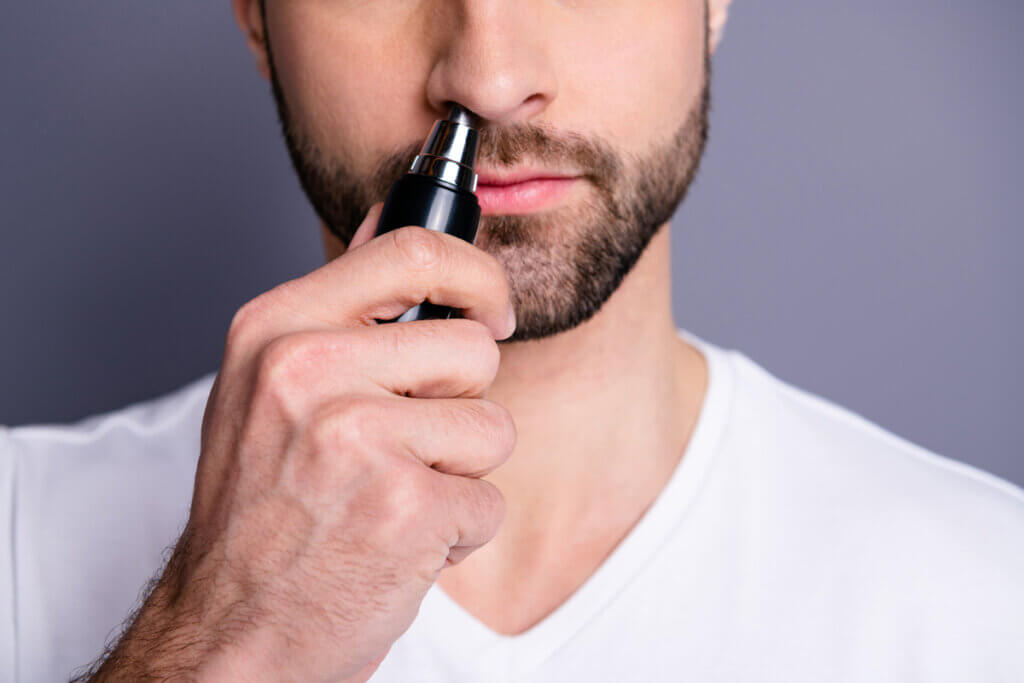
Care and maintenance
A nose hair trimmer that is cleaned after each use, if possible, not only ensures a high level of hygiene, but also a longer service life. Many devices can be cleaned under running water, while others are simply cleaned with a cleaning brush to remove residual hair and dust. In this way, the user avoids clogging the trimmer or prematurely dulling the blades. If possible, the shaving head should be replaced at regular intervals. However, this is not profitable, especially with inexpensive devices: Here it is recommended to invest in a new nose hair trimmer if necessary.
The trimmer does not work properly: What could be the reason?
If the nose hair trimmer does not work properly, it is often because the blades have become blunt. A weak battery can also mean that the nose hairs are not completely removed or are merely painfully plucked out. If the hair cutting result is unsatisfactory, it is also advisable to clean the device thoroughly, because the shaving head may be clogged. If the problem cannot be solved, it is usually not worth repairing the nose hair trimmer. Good devices are already available at very reasonable prices, so it is advisable to buy a new nose hair trimmer directly.
Why should I not use my nose hair trimmer when I have a cold?
When you have a cold, the sensitive nasal mucosa is usually already irritated anyway due to frequent nose blowing. Using a nose hair trimmer could further aggravate the condition of the skin and cause irritation such as redness and itching. Furthermore, removing nose hair during a cold is anything but conducive to the healing process. This is because the nose hairs prevent harmful substances from getting deeper into the nose and also bind pathogens. Anyone suffering from a cold should therefore temporarily avoid using a nose hair trimmer.
What alternatives are there to nose hair trimmers?
If you want to remove your nose hair gently and easily, a nose hair trimmer is the best choice. Although there are also nose hair scissors, they are not nearly as comfortable as a nose hair trimmer. Nose hair scissors are usually very small and therefore not very suitable for men with large hands. Cutting with nose hair scissors in the narrow nostrils is also quite complicated. Last but not least, the risk of injury when handling a pair of nose hair scissors on the face is much higher than when using a high-quality nose hair trimmer. Tweezers are another alternative. However, grabbing individual hairs and plucking them out requires a lot of practice and concentration. Plucking is also a strain on the skin, so irritation such as redness and itching can occur. The risk of painful infections is also much higher than with gentle hair removal with a nose hair trimmer.
How long have nose hair trimmers been around?
The first nose hair trimmer, called a Klipette, came onto the market as early as 1935 in the USA, more precisely in New Jersey – but the commercial breakthrough was initially a long time coming. It was only through the marketing of the nose hair trimmer in renowned magazines (for example National Geographic) that the Klipette gradually gained attention. Consumers were made aware that pulling out nose hairs with tweezers can lead to painful inflammation and that the nose hair trimmer was a user-friendly and safe alternative. As a result, the manufacturer was able to sell the Klipette to hairdressing shops through wholesalers, which made the device increasingly popular.
The Klipette remained the only nose hair trimmer on the market for many decades. It was not until the late 1980s that the company PHR Systems developed a copy of the original: the Groom Mate. Today, the nose hair trimmer is an integral part of the product range of many well-known manufacturers, for example Philips, Braun, Panasonic or Remington.
What does a good nose hair trimmer cost?
Nose hair trimmers are already available at reasonable prices – often from as little as five euros. However, if you want to get something out of the device in the long run and benefit from thorough hair removal, you should invest a little more money and go for a model that costs at least ten euros. For 20 to 25 euros, the consumer receives a high-quality brand-name device that often scores with practical accessories and particularly comfortable handling. Brand-name appliances can usually be easily cleaned under the tap. In addition, the battery lasts much longer than with no-name products, which have to be charged very frequently or are completely discharged after only a short period of non-use. So if you buy cheap, you usually end up paying more!
I am looking for a nose hair trimmer for on the go: What should I look out for?
The growth rate of nose hair is just as high as that of the rest of the body hair. Therefore, it may also be necessary to trim nose hair when travelling. Due to its compact size and light weight, a nose hair trimmer can easily fit in any suitcase. It is best to carry it in a storage bag or case to keep it clean and prevent damage. This is because dirt on the device could get into the nose during use and cause irritation. If you are travelling abroad, you should also make sure that the nasal hair trimmer can be charged at the usual sockets there. An adapter may be required, which can then also be used for the shaver or hair dryer.

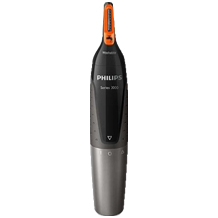
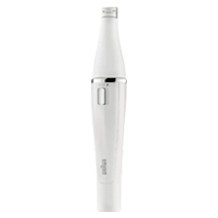

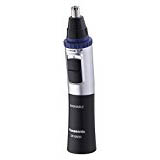
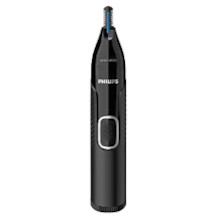


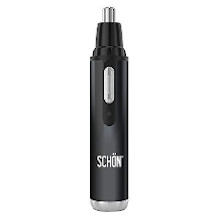



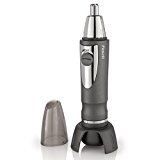
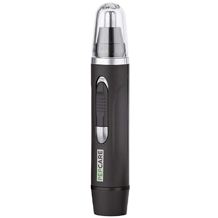

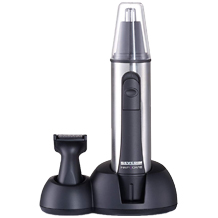
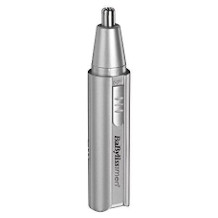
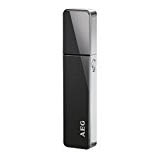
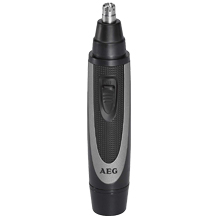


 42,801 reviews
42,801 reviews

